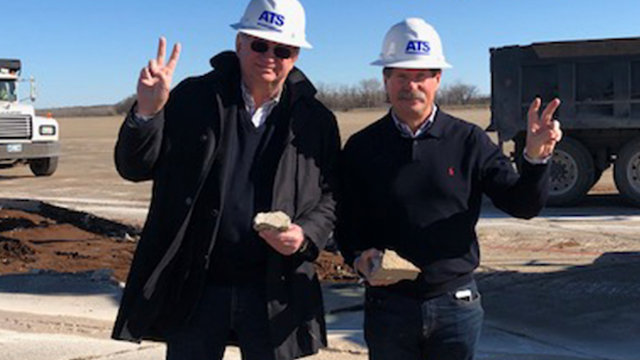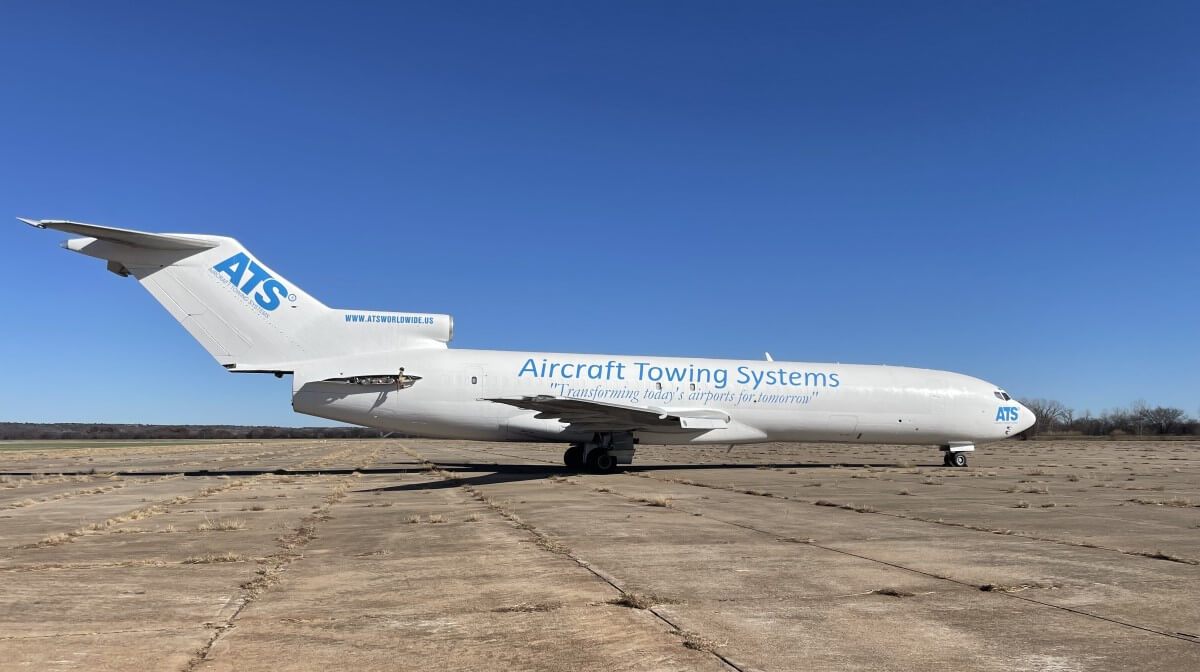The ATS system is fully automatic, utilizing an electric-powered pull car/tow dolly that rides on a monorail in a below-ground channel and pulls aircraft from the runway to the gate and back. Once the aircraft nose gear is taxied onto the tow dolly, the aircraft main jet engines are shut down and the towing operation begins.
Benefits of ATS
Green and Sustainable System
- Safer Taxiing Operations – Leading to Fewer Ground Collisions
- Substantial Fuel Savings
- Improves Air Quality – Reducing Harmful Emissions
- Reduces Personnel & Equipment Around Congested Gate Area
- Operates in All Weather Conditions (Ice, Snow, Rain and Fog)
- Higher Airport Throughput (without adding gates) – Optimizing Aircraft Movements
- Decreasing Noise In and Around Airports
- Extending Aircraft Jet Engine and Component Life
- Reducing Chances of FOD in Main Jet Engines
- Less Stress on Airframes During Taxi
Airport Safety
Each year there are several hundred aircraft collisions during taxiing operations. Fortunately, most accidents do not endanger passengers’ lives, but negatively impact the daily operations of airports and airlines. These collisions cause substantial financial losses (estimated $50B annually) and disrupt airport operations impacting passengers.
The ATS system would add an entirely new layer of safety by maintaining positive control of the aircraft creating a safer towing environment.
- Aircraft cannot deviate from the predetermined path
- Sensors detect luggage carts, fuel trucks, other aircraft & animals
- Pilot maintains control of aircraft – disconnect with brakes or throttle
- Optimizes aircraft traffic on taxi-lanes
- Stacks aircraft closer together – engines are shut off during taxi movements
In an emergency, towed aircraft are stopped immediately with notifications about the incident going to ground traffic control, pilots and other taxiing aircrafts. The system automatically reacts to emergency situations and adjusts the movements of other affected aircraft accordingly.
ATS will help eliminate most ground collisions at airports!
In 2016:
- Airlines carried 3.8 billion passengers
- Aircraft made 130 million ground movements
- Passenger aircraft consumed 80 million liters or 21 million gallons of fuel per day or 29.2 billion liters or 8 billion gallons annually
- 5% of aircraft fuel consumption is used for taxing (4 million liters or 1 million gallons daily or 1.46 billion liters or 385 billion gallons annually)
- Emission of toxins during taxi in one day worldwide
CO 82,500 kg (182,000 lbs)
CO2 14,800 kg (33,000 lbs)
NOx 18,400 kg (41,000 lbs)
HC 6,840 kg (15,100 lbs)
Boeing 747 aircraft consume approximately 3,600 liters (951 gallons) of fuel during taxi for a single flight from Frankfurt Airport to New York JFK Airport.
“Moving People Safer While Protecting the Environment!”
Fuel Savings
ATS is designed to transport aircraft between runway and gate without using the main aircraft engines. Depending on the type and size of aircraft, fuel usage for one minute of taxi time is approximately 5-19 gallons or 20-73 liters per minute. Average fuel usage for passenger aircraft is about 9 gallons or 35 liters per minute while taxiing . In the US at major airports the average taxi time is 16-27 minutes and 200,000 to over 900,000 aircraft movements per year.
Fuel Savings Example:
Average Fuel burned during taxi: 9 gals or 35 liters per minute
Average Taxi Time: 16 minutes
Average Aircraft Movements per year: over 500,000
Fuel Consumption:
9 gallons of fuel per minute x 16 minutes taxi time = 144 gallons of fuel per taxi
144 gallons of fuel per taxi x $3.52 per gallon = $507 per movement
500,000 movements x $507 per movement = over $254M or €244M per year in fuel savings
Note: The electrical cost to move the same aircraft with the ATS system is less than $9.00 per movement in the US, depending on the region of the country and cost of electricity.
With the ATS system installed, the main jet engines are shut down during taxi. Currently, aircraft use thrust from the main jet engines to move around airports. THrust puts large amounts several different types of harmful engine emissions output from jet engines burning petroleum-based fuel. Carbon dioxide, nitric oxide, hydrocarbons, and carbon monoxide are the four most harmful.

- Carbon Dioxide
- Nitric Oxide
- Hydrocarbon
- Carbon Monoxide
About 20 lbs of carbon dioxide emissions are generated per gallon of fuel burned and nitrous oxides are produced at a rate one-half percent of CO2 rates.
Emission Savings Example: Frankfurt Airport if ATS were installed
Average Fuel burned during taxi: 9 gals or 35 liters per minute
Average Taxi Time: 16 minutes
Average Aircraft Movements per year: over 500,000
Fuel Consumption: 500,000 movements x 16 min (taxi time) x 9 gal (fuel) = 74M gallons or 280M liters of fuel used during taxi
Harmful Emissions: carbon-dioxide (CO2) & nitrous oxides (NOx)
CO2 emissions generate 20 lbs. per gallon of fuel burned
NOx produces at rate .5% of CO2 rates
74M gallons x 20 lbs = 148M lbs or 67M kg of CO2 not emitted at Frankfurt
148M lbs x .5% = 740,000 lbs or 340,000 kg of NOx not emitted at Frankfurt
The following amounts of gasses were released into the atmosphere from aircraft taxiing at three major European airports (Frankfurt, London-Heathrow and Charles de Gaulle) in 2016.
Symbol Description Value European Unit Value US Unit
| Symbol |
Description |
Value |
European Unit |
Value |
US Unit |
| HC |
Hydrocarbons |
1.7M |
kg |
3.7M |
lb |
| CO2 |
Carbon Dioxide |
3.6M |
kg |
7.9M |
lb |
| NOx |
Nitric Oxide |
4.5M |
kg |
9.9M |
lb |
| CO |
Carbon Monoxide |
20.8 |
kg |
45.9M |
lb |
Note: Carbon dioxide is a greenhouse gas, nitric oxides are carcinogenic & carbon monoxide is lethal to humans.
"Global use of ATS can play a significant role in improving the environment."











